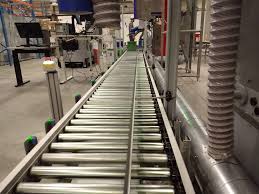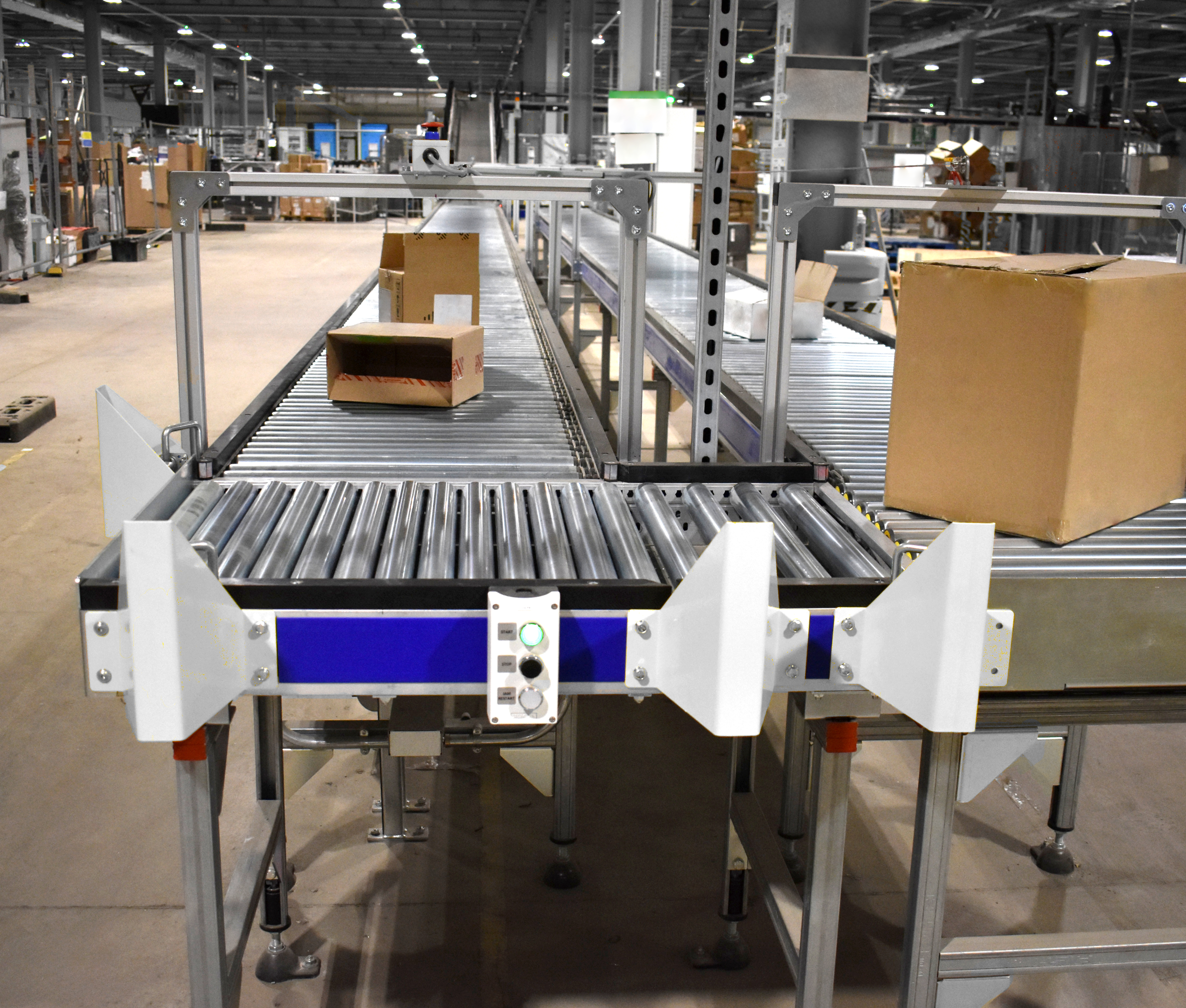In today's fast-paced industrial landscape, efficient material handling is critical for operational success. Rolling conveyor systems have emerged as a cornerstone of this efficiency, offering businesses a reliable and versatile solution to move goods and materials across various production stages. This blog explores the advantages, applications, and key considerations for implementing rolling conveyor systems in your facility.
What Are Rolling Conveyor Systems?
Rolling conveyor systems consist of a series of cylindrical rollers mounted on a frame. These rollers facilitate the smooth and controlled movement of items across production or distribution areas. Depending on the application, the rollers may be powered (motor-driven) or unpowered (gravity-driven).
Types of Rolling Conveyor Systems
-
Gravity Rolling Conveyors
- Utilizes the force of gravity to move items.
- Ideal for lightweight items or applications with a downward slope.
- Cost-effective and low-maintenance.
-
Powered Rolling Conveyors
- Equipped with motors for controlled movement.
- Suitable for heavier loads and precise material handling.
- Often used in assembly lines and packaging areas.
-
Flexible Rolling Conveyors
- Adjustable in length and direction.
- Perfect for dynamic work environments requiring adaptability.
-
Heavy-Duty Rolling Conveyors
- Built for transporting large or heavy items.
- Common in industries like automotive and construction.
Applications of Rolling Conveyor Systems
Rolling conveyors find utility in a wide range of industries:
- Manufacturing: Streamline assembly lines, transport raw materials, and handle finished goods.
- Warehousing and Distribution: Speed up order picking, packing, and dispatch processes.
- Food and Beverage: Safely move products while maintaining hygiene standards.
- Automotive: Transport vehicle components with precision.
- E-commerce: Enhance the efficiency of sorting and shipping operations.
Benefits of Rolling Conveyor Systems
-
Increased Efficiency
Rolling conveyors significantly reduce manual handling time, leading to faster production cycles. -
Cost-Effective
With reduced labor requirements and minimal maintenance, these systems offer long-term cost savings. -
Scalability
Modular designs make it easy to expand or reconfigure conveyors as business needs evolve. -
Safety
By automating material movement, rolling conveyors minimize the risk of workplace injuries associated with heavy lifting. -
Versatility
Suitable for handling diverse items, from lightweight packages to bulky components.
Key Considerations for Choosing a Rolling Conveyor System
-
Load Capacity
Ensure the system can handle the weight of your materials without compromising efficiency. -
Material Type
Choose rollers made from durable materials like stainless steel for heavy-duty applications or PVC for lighter items. -
Space Availability
Consider flexible or modular conveyors if you have limited space. -
Integration
Opt for systems that seamlessly integrate with existing equipment and processes. -
Maintenance Needs
Evaluate the ease of cleaning and maintaining the system to minimize downtime.
Future Trends in Rolling Conveyor Systems
With advancements in automation and Industry 4.0, rolling conveyor systems are becoming smarter. Integrating IoT and AI technologies enables real-time monitoring, predictive maintenance, and enhanced efficiency. These innovations are set to revolutionize material handling, making rolling conveyors indispensable for the factories of the future.
Conclusion
Rolling conveyor systems are a vital component of modern material handling. Their efficiency, cost-effectiveness, and adaptability make them an excellent investment for businesses across industries. Whether you're in manufacturing, warehousing, or e-commerce, implementing the right rolling conveyor system can streamline operations and drive growth.
If you’re considering rolling conveyor systems for your business, consult with experts to ensure the system meets your specific needs and supports your long-term goals.
For more insights on material handling solutions, contact us today!






